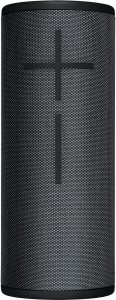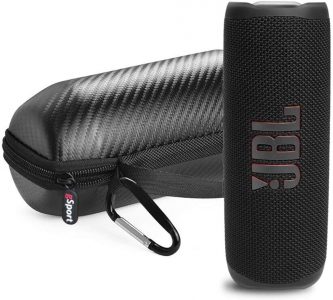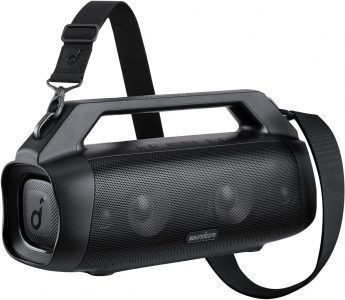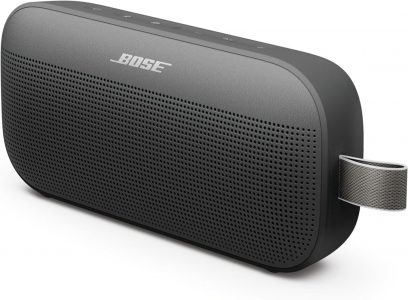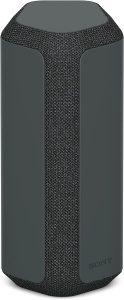Portable Bluetooth Speaker Buying Guide – Outdoor Picks
Taking music into the great outdoors enhances every adventure, from hiking through dense forests to camping under starry skies. However, not every Bluetooth speaker is suitable for rough-and-tumble activities. When heading outdoors, your speaker needs to withstand challenging conditions like dirt, water, drops, and long hours of playback.
In this comprehensive guide, we’ll dive into how to choose a durable, reliable, and high-quality portable Bluetooth speaker perfect for your outdoor adventures.
Essential Features
When choosing a portable Bluetooth speaker for outdoor use, it’s easy to get distracted by flashy designs or brand names. But in real-world outdoor scenarios — where you might be miles from a power outlet, walking through rain, or tossing your gear into the back of a dusty truck — the speaker’s core performance and durability become far more important than aesthetics.
Here’s a deeper look at the essential features every outdoor adventurer should prioritize:
🔋 Battery Life: Keep the Music Playing
Battery life isn’t just about convenience — it can make or break your outdoor experience. Whether you’re on a multi-day hike, setting up camp in a remote location, or hosting a beach barbecue, your speaker should last as long as your adventure does.
What to look for:
Minimum Runtime: Aim for at least 10-12 hours of playback. This covers a full day of use or several evenings by the campfire.
Fast Charging: USB-C fast charging is becoming more common and can be a lifesaver if you’re recharging via a portable power bank.
Battery Indicators: Look for clear LED battery indicators or companion apps that show battery level — guessing is not ideal when you’re off the grid.
Power Bank Capability: Some high-capacity speakers (like the Anker Motion Boom Plus) double as portable chargers, letting you top up your phone or GPS device in an emergency.
💡 Pro tip: In colder environments, lithium-ion batteries drain faster. Store your speaker inside your backpack or sleeping bag to preserve its charge overnight.
🛡️ Ruggedness: Built to Take a Beating
Outdoors, accidents happen. Your speaker might get dropped on rocks, stepped on at a party, or knocked off a picnic table by an enthusiastic dog. A rugged design ensures your speaker keeps working through it all.
What to look for:
Shock Resistance: Look for models described as drop-proof, shockproof, or tested for military-grade durability (MIL-STD-810G).
Materials: Rubberized exteriors, reinforced bumpers, and metal grilles add physical protection and prevent cosmetic damage.
Dust Protection: If you’re heading to sandy beaches or desert hikes, prioritize speakers with dust-resistant ratings (usually IP6X).
Mounting Options: Clips, carabiner loops, and integrated straps help secure the speaker to your backpack or bike, reducing the risk of falls.
💡 Pro tip: Check user reviews or videos showing real-world durability tests — marketing claims don’t always match reality.
💦 Waterproof Ratings: Survive Splashes, Storms, and Submersion
Water is the number one enemy of electronics. Whether it’s sudden rain, a spilled drink, or a dunk in a stream, outdoor speakers need strong water protection.
Understanding IP Ratings:
The IP (Ingress Protection) code is the international standard for waterproofing and dust resistance. Here’s how to decode it:
| IP Rating | Description |
|---|---|
| IPX4 | Splash-resistant – safe for light rain or sweat. |
| IPX5/IPX6 | Resistant to jets of water – handles heavy rain or hose-downs. |
| IPX7 | Submersible in 1 meter of water for up to 30 minutes. Great for pools, kayaks, and sudden downpours. |
| IP67 | Fully waterproof and dustproof – best all-around protection. |
| IP68 | Enhanced submersion – more depth or longer time underwater. Ideal for extreme use like canyoning or boating. |
Additional waterproofing features to consider:
Floating Design: Some models (like the UE Wonderboom 3) float on water — perfect if you’re kayaking or paddleboarding.
Sealed Ports: USB charging ports should have rubber flaps or seals to block out water and dust.
Drainage Holes: Some rugged speakers have small holes that allow water to escape if submerged.
💡 Pro tip: Even if a speaker is waterproof, don’t charge it while wet. Let it fully dry to avoid internal damage.
In summary, choosing a speaker with long-lasting battery life, rugged construction, and high waterproof/dustproof ratings is essential for stress-free enjoyment. These features aren’t luxuries — they’re must-haves that ensure your speaker survives and thrives in the wild, just like you.
🔊 Sound Quality Outdoors: What to Look For
Sound behaves very differently outside compared to indoors. When you’re in a living room or a bedroom, the walls and ceiling help reflect sound, amplifying it and enriching bass frequencies. Outdoors? There’s nothing to contain or bounce the sound back to you — it just disperses into the open air. That’s why sound quality and speaker design matter even more when you take your music outside.
Here’s what to focus on when evaluating sound performance for outdoor environments:
1. Volume Output (Measured in Watts and Decibels)
Outdoors, you’ll often have ambient noises to compete with — wind, conversations, birds, waves, or even a nearby generator. That means your speaker should be loud enough to rise above all that without distorting.
What to look for:
Wattage (W): Most outdoor Bluetooth speakers range between 10W and 80W. The higher the wattage, the louder the speaker can get.
10-20W: Fine for solo hikes, quiet camping.
20-40W: Ideal for small groups or gatherings.
40W+: Suitable for parties, open beaches, or large campgrounds.
Decibels (dB): Some brands list max sound pressure levels (SPL). Aim for 80-90 dB or more if you want serious outdoor projection.
💡 Pro tip: Always check if a speaker distorts at max volume — some cheaper models sound great at 50% but fall apart at full blast.
2. Balanced Sound Profile (Bass, Mids, Highs)
A well-balanced sound signature ensures your music doesn’t sound tinny, flat, or overly boomy — especially in the great outdoors where bass naturally gets absorbed.
Ideal outdoor sound traits:
Punchy Bass: Passive radiators or subwoofers are essential for reinforcing low-end sounds, especially in open air.
Clear Mids: Instruments and vocals live in the midrange. A speaker with weak mids will sound hollow or muddy.
Bright Highs: Treble frequencies should be sharp but not piercing, helping add sparkle and clarity, especially in acoustic or classical tracks.
🎵 What does that mean in real life? You want to hear the bass drum and the vocals clearly — whether you’re playing rock, EDM, or a podcast about survival tips.
3. 360-Degree Sound Projection
Standard front-facing speakers can sound great in small rooms but underperform outdoors when the listener moves around. That’s why many of the best outdoor models feature 360-degree sound dispersion.
Benefits of 360° sound:
Everyone around the campfire hears music at the same quality.
Perfect for social settings where people move around — BBQs, picnics, poolside hangouts.
No need to constantly reposition your speaker.
Speakers like the Ultimate Ears Boom 3 or JBL Pulse 5 are popular examples offering excellent omnidirectional sound.
4. Stereo Pairing and Multi-Speaker Setups
Want even more immersive outdoor audio? Many modern Bluetooth speakers support stereo pairing or multi-room playback — connecting two or more speakers together.
Stereo Pairing: Left/right channel separation adds depth and clarity, great for music lovers.
Party Mode: Some brands (like JBL with PartyBoost or Bose with SimpleSync) let you link multiple speakers for synchronized audio — ideal for large outdoor events or spreading sound across a campground.
💡 Pro tip: If you already own a speaker, check if it supports pairing with newer models — especially if staying in the same brand ecosystem.
5. Smart Sound Features and EQ Customization
Outdoor conditions vary — a windy mountain top needs different sound settings than a quiet forest. That’s where custom EQ (equalizer) settings come in handy.
Look for:
Companion apps that allow bass/treble adjustments.
Adaptive EQ (like on the Bose SoundLink Flex) which automatically adjusts output based on the speaker’s orientation.
Preset sound modes for outdoor, voice, or party listening.
These features let you fine-tune your sound to match the environment — a big win for audiophiles and casual listeners alike.
6. Speaker Orientation and Placement Tips
Even the best speaker needs smart placement for optimal sound outdoors:
Elevate it off the ground to prevent sound absorption by grass or sand.
Face it toward a natural surface (like a tent wall or tree) to reflect sound and enhance projection.
Avoid corners or cramped spaces that can muffle sound.
Some portable speakers come with tripod mounts, bike attachments, or carabiner loops, helping you place the speaker just right.
In short, when evaluating a Bluetooth speaker’s sound quality for outdoor use, don’t settle for specs alone. Think about real-world use — how loud it gets, how clear the sound is at different angles, and whether it adapts to your surroundings. A great outdoor speaker doesn’t just play music — it fills the space with it, from the mountaintop to the beach.
🔝 Best Portable Bluetooth Speakers for Camping & Hiking (Top Picks for 2025)
We’ve handpicked some of the best-performing portable Bluetooth speakers specifically designed for outdoor use. These models strike the right balance between sound quality, battery life, ruggedness, and portability. Whether you’re scaling mountains or setting up a cozy campfire, one of these will have your soundtrack covered.
Battery life: Up to 15 hours
Waterproof rating: IP67
Weight: 608g
Sound: 360° audio with balanced highs, mids, and solid bass
The Boom 3 has earned a reputation as a go-to speaker for outdoor adventures — and it continues to live up to the hype. Built with a rugged fabric shell, it can take on dust, water, and drops with ease. Its floating design adds peace of mind during trips near lakes or rivers. Despite its compact size, the sound fills space well, especially with its 360-degree output that doesn’t require constant repositioning. The top control button allows for quick music access, and it pairs seamlessly with multiple UE speakers if you’re building a bigger sound setup.
Battery life: Up to 12 hours
Waterproof rating: IP67
Weight: 550g
Sound: Defined bass with a punchy profile and crisp mids
Don’t let the small footprint fool you — the Flip 6 is a true workhorse when it comes to performance outdoors. It’s incredibly portable, making it easy to toss into a backpack or clip onto your bike. JBL’s distinct audio tuning gives this speaker a surprisingly full sound with great bass presence, and it performs well even in wide, open spaces. The durable rubberized design stands up to dirt and drops, and the waterproofing means it’s not fazed by rain or splashes.
Battery life: Up to 20 hours
Waterproof rating: IP67
Weight: 2.4kg
Sound: 80W stereo output with strong bass emphasis and good clarity
This speaker is built for those who need volume, endurance, and the ability to power through hours of outdoor activity. With a large battery and substantial drivers, it has no problem filling a big space with powerful audio. It’s heavier than most portable models, but the built-in handle and optional shoulder strap make transport easier. Extra perks like a built-in power bank and customizable EQ via the Soundcore app make it ideal for longer, multi-day excursions. While not ultra-light, it’s well worth the extra weight for group trips and larger outdoor areas.
Battery life: Up to 12 hours
Waterproof rating: IP67
Weight: 600g
Sound: Balanced and refined, with a focus on detail and clarity
Designed with thoughtful features and excellent craftsmanship, the SoundLink Flex delivers clean, natural audio with a warm tone that works across genres. A unique sensor detects the speaker’s position and adjusts the sound accordingly, so you get consistent performance whether it’s lying flat, hanging from a hook, or standing upright. The soft-touch finish resists scratches and the silicone shell absorbs minor shocks. It’s a sleek yet rugged companion that holds up well during road trips, campsite lounging, or beach days.
Battery life: Up to 24 hours
Waterproof rating: IP67
Weight: 1.3kg
Sound: Directional audio with extended range and wide dispersion
Sony’s XE300 stands out with its line-shaped sound diffuser, projecting audio evenly across open spaces — ideal for outdoor gatherings or setting up a wide listening area. With one of the longest battery lives in its category, it’s suited for extended outdoor adventures without frequent recharging. Its tough exterior handles drops, dust, and splashes without issue, while the USB-C fast charging helps you top up quickly when needed. Though slightly heavier than the average portable speaker, its long runtime and broad sound coverage more than make up for it.
🎯 Quick Comparison at a Glance
| Model | Battery Life | Weight | Sound Strength | Extra Perks |
|---|---|---|---|---|
| UE Boom 3 | 15 hrs | 608g | 360° balanced audio | Floats on water, multi-speaker pairing |
| JBL Flip 6 | 12 hrs | 550g | Strong bass, compact | Rugged build, PartyBoost support |
| Motion Boom Plus | 20 hrs | 2.4kg | High volume, deep bass | Power bank, custom EQ |
| SoundLink Flex | 12 hrs | 600g | Premium clarity | Position-aware sound adjustment |
| Sony XE300 | 24 hrs | 1.3kg | Broad, directional sound | Longest battery, wide sound spread |
These speakers all bring something different to the table — from ultralight and portable to loud and long-lasting. The best choice depends on your adventure style: solo trails, group hikes, beach days, or multi-day camping. The good news? Every option listed here is built to handle the wild while delivering great sound.
🛠️ Care and Maintenance Tips for Your Outdoor Bluetooth Speaker
A good outdoor Bluetooth speaker is an investment — and like any piece of gear, it performs best when properly looked after. Dust, moisture, UV rays, and accidental knocks are all part of the outdoor experience, but that doesn’t mean your speaker has to suffer for it. With a few smart habits, you can keep your speaker running strong and sounding great for years to come.
Here’s how to maintain your speaker before, during, and after your adventures:
🧼 1. Regular Cleaning Prevents Long-Term Damage
Outdoors, your speaker is constantly exposed to dust, sand, mud, and even bug spray. Over time, these elements can clog speaker grills, scratch surfaces, or interfere with charging ports.
Best practices:
Wipe it down with a soft, damp cloth after each use — especially after beach or mountain trips.
Use a soft brush or compressed air to clean out grills, seams, or charging ports.
Avoid using harsh cleaners or alcohol — they can degrade rubber seals and fabric finishes.
💡 Tip: If your speaker is waterproof, a quick rinse under a gentle stream of water can remove stubborn sand or salt. Just make sure the port covers are securely closed.
🌞 2. Protect It from Extreme Sun and Heat
While most rugged speakers are designed for tough environments, excessive heat can damage the battery and plastic components. Leaving it baking in the sun for hours — especially on rocks, dashboards, or pool edges — can reduce battery lifespan and cause cosmetic damage.
Tips to stay cool:
Keep your speaker shaded when not in use.
Avoid direct exposure on hot surfaces (like car hoods or pavement).
Don’t leave it inside a parked car or tent in the sun — heat buildup can be extreme.
💧 3. Dry Thoroughly After Water Exposure
Even waterproof speakers can suffer from long-term moisture buildup, especially around seams or inside charging ports. Just because it can survive a dip doesn’t mean you should charge it soaking wet.
Drying checklist:
Shake off excess water gently (don’t drop it!).
Let it air-dry in a shaded area, preferably upright to allow drainage.
Open the charging port cover to let any trapped moisture evaporate.
Wait until it’s 100% dry before connecting it to a charger.
💡 Tip: If you’re near saltwater, rinse the speaker with fresh water before drying. Salt can corrode internal components over time.
🔋 4. Charge Smart to Prolong Battery Life
Your speaker’s lithium-ion battery will perform best with a few healthy charging habits:
What helps:
Don’t always drain the battery to 0%. Try to recharge when it hits 20–30%.
Avoid storing it fully charged or fully empty for long periods.
Use the original charger and cable or one with the correct voltage to avoid damaging the battery.
Charge every 1–2 months during storage to prevent deep discharge.
💡 Storage tip: If you’re not using the speaker for an extended period (off-season), store it at around 50% battery and in a cool, dry place.
📦 5. Use a Protective Case or Mount
A simple way to reduce wear and tear is to invest in a quality carrying case or protective sleeve. It adds shock absorption during transport and protects buttons, grilles, and ports from getting crushed or scratched inside a backpack.
Other options:
Carabiners or straps: For speakers with built-in loops, these keep it from banging around or falling during hikes or rides.
Bike or tripod mounts: Useful for specific placement and protection while on the move.
🔄 6. Update Firmware and Use Companion Apps
Many modern Bluetooth speakers include firmware that can be updated through a smartphone app. These updates often improve sound performance, fix bugs, or add features like stereo pairing or EQ controls.
Good habits:
Check the manufacturer’s app regularly for updates.
Use the app to configure sound profiles, monitor battery health, or adjust settings.
Some apps also let you lock buttons, preventing accidental presses during transport.
🚫 7. Know What NOT to Do
Avoiding common mistakes can save you from irreversible damage:
Don’t charge a wet speaker — even if it claims to be waterproof.
Don’t leave it plugged in 24/7 — it stresses the battery.
Don’t toss it around loosely in luggage or backpacks without padding.
Don’t ignore weird sounds or behavior — crackling, volume drops, or failed pairing might signal internal issues.
Taking a few extra minutes to clean, dry, and store your Bluetooth speaker properly can go a long way in extending its life. Outdoor gear takes a beating — but with the right care, your speaker will keep the music going strong for many adventures to come.
🎵 Conclusion: Get the Best Sound on Your Next Adventure
Choosing the right portable Bluetooth speaker for outdoor adventures isn’t just about getting loud sound — it’s about finding a reliable companion that can keep up with your lifestyle, wherever the trail takes you. From rugged construction and waterproof ratings to long battery life and crisp audio that carries in open spaces, every detail counts when you’re off the grid.
Whether you’re a solo hiker needing something lightweight and efficient, or part of a group looking to bring the party to the mountains or beach, there’s a speaker built for your specific needs. Models like the Ultimate Ears Boom 3, JBL Flip 6, and Soundcore Motion Boom Plus show just how far portable audio has come — with smart features, real-world durability, and sound quality that doesn’t compromise.
But even the best speaker can only go so far without proper care. With just a bit of attention to maintenance — keeping it clean, dry, and charged — your speaker will reward you with years of dependable performance, no matter the terrain or weather.
So go ahead — pack your playlist next to your compass, boots, and water bottle. Your soundtrack deserves to be part of the journey.

